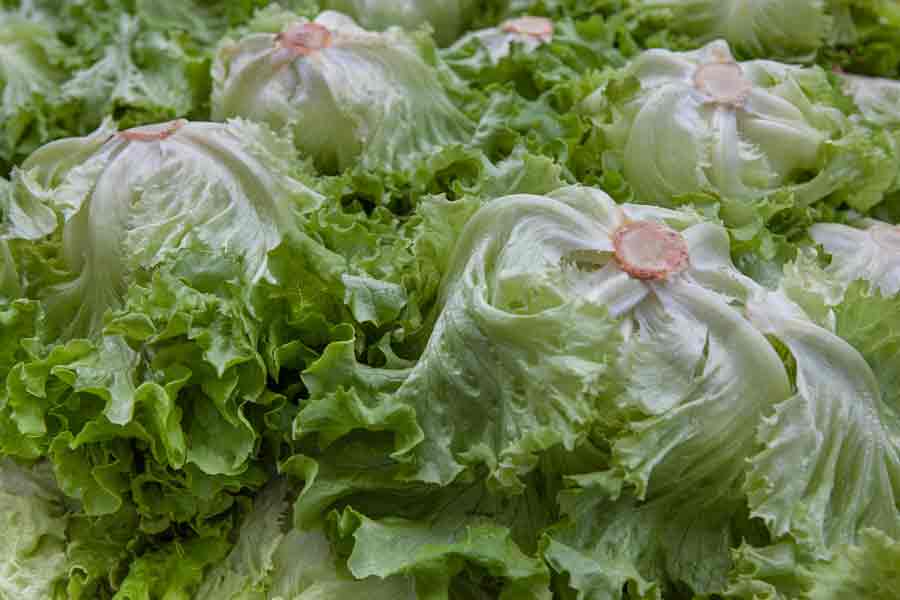Lettuce Companion Plants emerge as unsung heroes, lending a helping hand to our beloved leafy greens. Picture this: a harmonious garden bed where every plant thrives, thanks to the strategic placement of its companions. Let’s delve into the world of Lettuce Companion Plants, where nature’s synergy transforms ordinary gardens into thriving ecosystems.
Understanding Lettuce Companion Planting:
Companion planting is a time-honored gardening practice that harnesses the power of nature’s relationships. By strategically pairing plants, we unlock a myriad of benefits that enhance growth, deter pests, and maximize space utilization. Now, let’s turn our attention to Lettuce Companion Plants, where this age-old technique takes center stage.
The Concept of Lettuce Companion Plants:
Lettuce, with its crisp leaves and delicate flavor, is a staple in many gardens. But did you know that surrounding it with compatible companions can elevate its growth and flavor? Lettuce Companion Plants are carefully selected allies that work in tandem with lettuce, each contributing its unique strengths to the garden ecosystem.
Factors to Consider when Choosing Lettuce Companion Plants:
When selecting Lettuce Companion Plants, several factors come into play. First and foremost, we consider pest deterrence, as certain plants naturally repel common garden pests, safeguarding our lettuce from harm. Additionally, we prioritize nutrient enhancement, seeking companions that enrich the soil and provide essential elements for lettuce growth. Finally, we pay heed to space utilization, ensuring that our companions complement lettuce without overshadowing its delicate leaves.
Best Lettuce Companion Plants
Strawberries: A Sweet Partnership
Picture a garden where the vibrant red of strawberries complements the lush green of lettuce. These two companions share more than just visual appeal; strawberries act as natural ground cover, shielding the soil and retaining moisture for lettuce roots to thrive. Through their mutual support, strawberries and lettuce create a harmonious environment where both plants flourish.
- Botanical Name: Fragaria × ananassa
- Light and Soil: Full sun to partial shade; well-drained, fertile soil.
- Spacing: 12-18 inches between lettuce plants and strawberries.
- Strategic Placement: Plant lettuce between strawberry rows or as an understory crop.
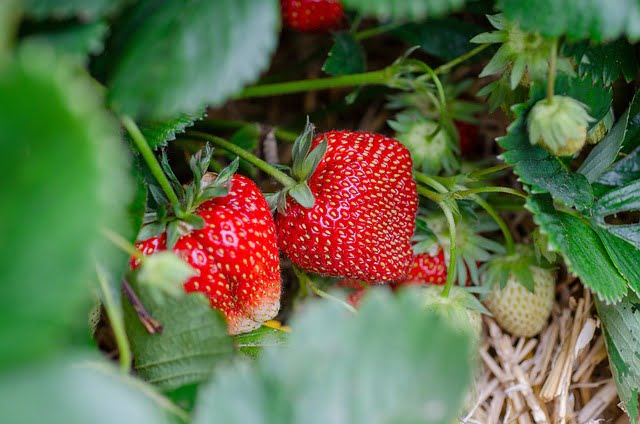
Beets: Adding Depth to the Garden Tapestry
In the colorful tapestry of the garden, beets stand out as a valuable companion to lettuce. Their deep taproots penetrate the soil, aerating it and improving drainage for lettuce’s shallow roots. As beets grow alongside lettuce, they not only enhance soil health but also provide a stunning visual contrast, elevating the aesthetic appeal of the garden.
- Botanical Name: Beta vulgaris
- Light and Soil: Full sun to partial shade; well-drained, loamy soil.
- Spacing: 4-6 inches between lettuce and beets.
- Optimized Layout: Interplant lettuce between beet rows, maintaining adequate spacing for beet growth.

Carrots: Nurturing Growth Side by Side
Carrots and lettuce, side by side in the garden bed, form a dynamic duo that fosters growth and resilience. While lettuce’s delicate leaves reach skyward, carrot anchor the soil below, preventing erosion and creating a stable environment for both plants to thrive. Together, they epitomize the essence of companionship, each supporting the other’s journey towards bountiful harvests.
- Botanical Name: Daucus carota
- Light and Soil: Full sun to partial shade; loose, sandy soil.
- Spacing: 2-4 inches between lettuce and carrots.
- Shade and Space: Plant lettuce in between carrot rows, ensuring carrots have space to develop underground.
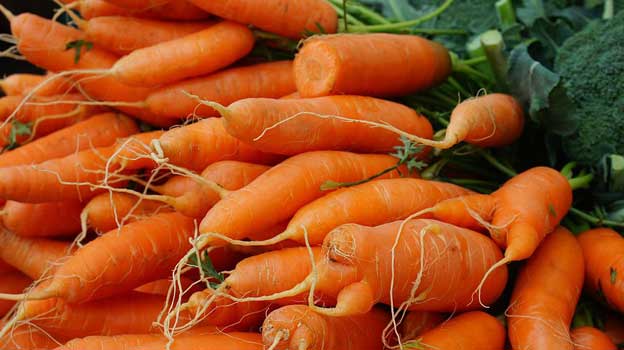
Peas: A Tale of Climbing Companions
In the garden’s intricate dance, peas and lettuce intertwine, their journey marked by mutual support and shared resources. As peas climb skyward, they provide shade for lettuce below, shielding it from the harsh sun and allowing it to thrive in cool, dappled light. This symbiotic relationship exemplifies the beauty of companion planting, where each plant plays a vital role in the other’s success.
- Botanical Name: Pisum sativum
- Light and Soil: Full sun; well-drained, fertile soil.
- Spacing: 4-6 inches between lettuce and peas.
- Vertical Integration: Grow peas on a trellis and plant lettuce at the base, ensuring peas don’t overshadow lettuce too much.
Read About: Companion Plants For Peas

Dill: Warding Off Pests Naturally
Dill emerges as a stalwart defender in the garden, warding off pests with its aromatic foliage and delicate blooms. As a companion to lettuce, dill acts as a natural pest deterrent, repelling harmful insects and safeguarding tender leaves from harm. Through their partnership, lettuce and dill create a sanctuary where pests are kept at bay, allowing both plants to flourish in peace.
- Botanical Name: Anethum graveolens
- Light and Soil: Full sun; well-drained soil.
- Spacing: 12-15 inches around lettuce.
- Scatter Planting: Plant dill sporadically around lettuce patches or on the edges of lettuce beds.

Basil: Infusing Flavor and Fragrance
In the garden’s sensory symphony, basil adds a note of flavor and fragrance that elevates the experience of growing lettuce. As companions, basil and lettuce share not only physical space but also a mutual appreciation for each other’s qualities. While lettuce provides a verdant backdrop, basil imparts its signature aroma and culinary versatility, enriching the garden with its presence.
- Botanical Name: Ocimum basilicum
- Light and Soil: Full sun; well-drained, fertile soil.
- Spacing: 8-12 inches between lettuce and basil.
- Aromatic Pairing: Plant basil near lettuce but avoid shading lettuce too much, as both need sunlight.

Marigolds: Guardians of the Garden
Marigolds emerge as steadfast guardians in the garden, their vibrant blooms warding off pests and brightening the landscape. As companions to lettuce, marigolds play a vital role in pest management, deterring harmful insects and attracting beneficial ones. Through their unwavering presence, marigolds instill a sense of resilience and vitality in the garden, ensuring that lettuce thrives in a safe and nurturing environment.
- Botanical Name: Tagetes spp.
- Light and Soil: Full sun; well-drained, fertile soil.
- Spacing: 6-12 inches between lettuce and marigolds.
- Protective Borders: Plant marigolds as a border around lettuce beds or interplant with lettuce.

Cilantro: A Flavorful Partnership
Cilantro brings its unique flavor and culinary flair to the garden, enhancing the taste of lettuce and adding depth to culinary creations. As cilantro and lettuce companion plants share not only flavor but also a symbiotic relationship that benefits both plants. While lettuce provides a nutritious backdrop, cilantro imparts its distinctive taste and aroma, enriching the garden with its presence.
- Botanical Name: Coriandrum sativum
- Light and Soil: Full sun to partial shade; well-drained soil.
- Spacing: 6-8 inches between lettuce and cilantro.
- Pest Control Pairing: Interplant cilantro with lettuce or plant in nearby rows.
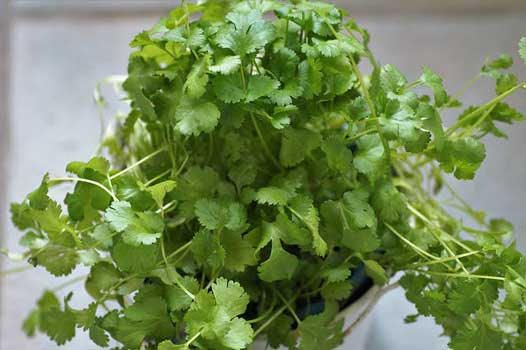
Radish: Thriving Together in Harmony
Radishes and lettuce, united in their quest for growth and vitality, form a harmonious partnership that enhances the garden’s beauty and bounty. As companions, radishes add a pop of color and texture to the garden, complementing the delicate leaves of lettuce with their vibrant roots. Through their shared journey, radishes and lettuce create a vibrant tapestry of colors and flavors, enriching the garden with their presence
- Botanical Name: Raphanus sativus
- Light and Soil: Full sun to partial shade; well-drained, fertile soil.
- Spacing: 4-6 inches between lettuce and radishes.
- Quick Growers: Plant radishes in between lettuce rows or around the edges of lettuce beds.

Catnip: A Natural Pest Repellent
Catnip emerges as a natural pest repellent in the garden, its aromatic foliage deterring harmful insects and protecting tender lettuce leaves from harm. As companions, catnip and lettuce form a formidable team, working together to keep pests at bay and create a safe and nurturing environment for growth. Through their partnership, catnip and lettuce exemplify the power of nature’s defenses, ensuring that the garden thrives in harmony.
- Botanical Name: Nepeta cataria
- Light and Soil: Full sun to partial shade; well-drained soil.
- Spacing: 12-18 inches around lettuce.
- Pest-Free Zone: Plant catnip near lettuce but ensure it doesn’t overpower the lettuce.
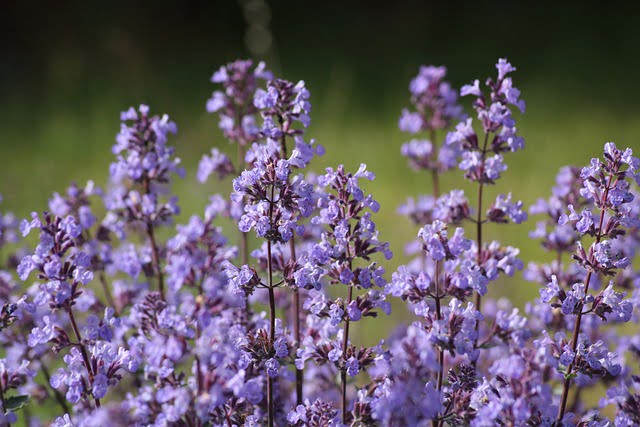
Nasturtium: A Splash of Color and Flavor
Nasturtiums burst forth in a riot of color, their vibrant blooms adding a touch of whimsy and beauty to the garden landscape. As companions to lettuce, nasturtiums not only dazzle the eye but also serve as natural pest deterrents, repelling harmful insects and protecting tender leaves from harm. Through their vibrant presence, nasturtiums and lettuce create a dynamic ecosystem where beauty and function intertwine.
- Botanical Name: Tropaeolum majus
- Light and Soil: Full sun to partial shade; well-drained soil.
- Spacing: 12-15 inches between lettuce and nasturtiums.
- Colorful Companions: Plant nasturtiums around the perimeter of lettuce beds or interspersed among lettuce plants.
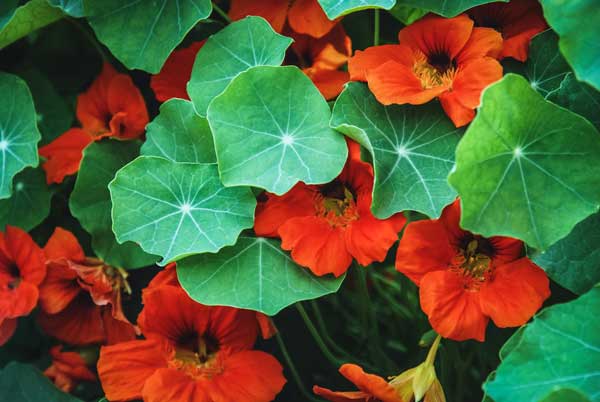
Mint: A Refreshing Addition to the Garden
In the verdant garden landscape, mint emerges as a refreshing companion to lettuce, infusing the air with its invigorating scent and adding a burst of flavor to culinary creations. As companions, mint and lettuce share not only physical space but also a symbiotic relationship that benefits both plants. While lettuce provides a nutritious backdrop, mint repels pests such as aphids and attracts beneficial insects like hoverflies, ensuring a balanced ecosystem where plants thrive in harmony.
- Botanical Name: Mentha spp.
- Light and Soil: Full sun to partial shade; well-drained, moist soil.
- Spacing: 12-18 inches around lettuce (in containers to prevent spreading).
- Controlled Placement: Keep mint in pots around the lettuce bed or in separate, controlled areas.
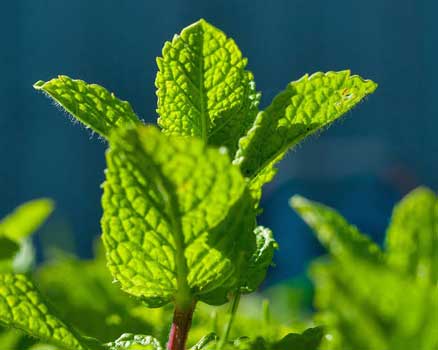
Garlic: Nature’s Pest Repellent
Garlic stands as a stalwart defender in the garden, its pungent aroma deterring pests and safeguarding lettuce from harm. As a companion to lettuce, garlic provides natural pest control, repelling aphids and root-knot nematodes with its potent scent. Through their partnership, garlic and lettuce create a resilient ecosystem where pests are kept at bay, ensuring that both plants flourish in abundance.
- Botanical Name: Allium sativum
- Light and Soil: Full sun; well-drained soil.
- Spacing: 6-8 inches between lettuce and garlic.
- Barrier Planting: Plant garlic in between or around lettuce rows, allowing enough space for both to grow.

Chives: Guardians of the Garden
Chives emerge as steadfast guardians in the garden, their slender leaves repelling pests and enhancing the flavor of lettuce. As companions, chives and lettuce form a formidable team, working together to deter aphids and provide natural pest control. Through their partnership, chives and lettuce create a resilient ecosystem where pests are kept at bay, ensuring a bountiful harvest of leafy greens.
- Botanical Name: Allium schoenoprasum
- Light and Soil: Full sun to partial shade; well-drained soil.
- Spacing: 6-8 inches between lettuce and chives.
- Flavorful Edges: Plant chives around lettuce beds or in between lettuce rows.
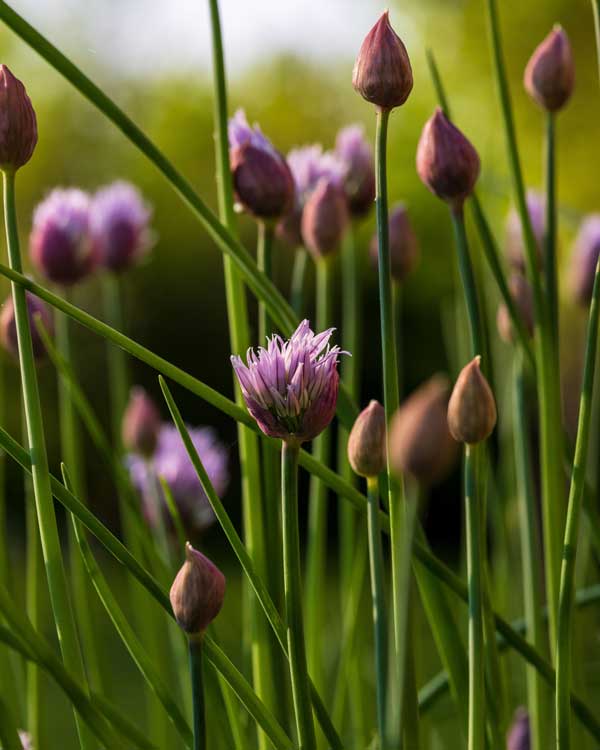
Thyme: A Fragrant Tapestry of Flavors
Thyme adds a fragrant touch to the garden landscape, its aromatic foliage infusing the air with its soothing scent and enhancing the flavor of lettuce. As companions, thyme and lettuce share not only physical space but also a symbiotic relationship that benefits both plants. While lettuce provides a nutritious backdrop, thyme attracts beneficial insects like hoverflies and parasitic wasps, ensuring a balanced ecosystem where plants thrive in harmony.
- Botanical Name: Thymus vulgaris
- Light and Soil: Full sun; well-drained, sandy soil.
- Spacing: 12-18 inches around lettuce.
- Fragrant Partners: Plant thyme near lettuce but avoid overshadowing it.

Turnips: Nurturing Growth Side by Side
Turnips and lettuce, side by side in the garden bed, form a dynamic duo that fosters growth and resilience. While lettuce’s delicate leaves reach skyward, turnips anchor the soil below, preventing erosion and creating a stable environment for both plants to thrive. Together, they epitomize the essence of companion planting, each supporting the other’s journey towards bountiful harvests.
- Botanical Name: Brassica rapa
- Light and Soil: Full sun; well-drained, fertile soil.
- Spacing: 6-8 inches between lettuce and turnips.
- Root Companions: Interplant lettuce between turnip rows, ensuring enough space for turnip growth.
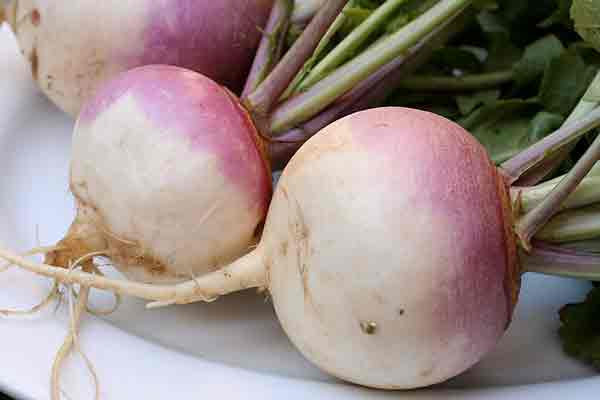
Chamomile: A Tranquil Haven in the Garden
Chamomile emerges as a tranquil haven in the garden, its delicate blooms attracting beneficial insects like hoverflies and parasitic wasps. As a companion to lettuce, chamomile provides natural pest control, repelling harmful insects and creating a peaceful sanctuary where plants thrive in harmony. Through their partnership, chamomile and lettuce exemplify the beauty and resilience of nature’s interconnected web.
- Botanical Name: Matricaria chamomilla
- Light and Soil: Full sun to partial shade; well-drained soil.
- Spacing: 12-15 inches around lettuce.
- Tranquil Borders: Plant chamomile near lettuce but not so close that it shades the lettuce.
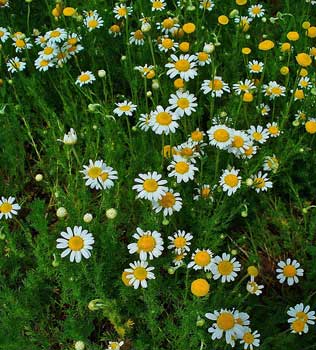
Lavender: Fragrance and Beauty in the Garden
Lavender adds a touch of elegance to the garden landscape, its fragrant blooms attracting pollinators and repelling pests like aphids. As a companion to lettuce, lavender provides natural pest control, ensuring a healthy and thriving ecosystem where plants flourish in abundance. Through their partnership, lavender and lettuce create a sensory symphony that delights the senses and nourishes the soul.
- Botanical Name: Lavandula angustifolia
- Light and Soil: Full sun; well-drained, slightly alkaline soil.
- Spacing: 12-18 inches around lettuce.
- Fragrant Borders: Plant lavender near lettuce beds or as a border, ensuring both have compatible growing conditions.
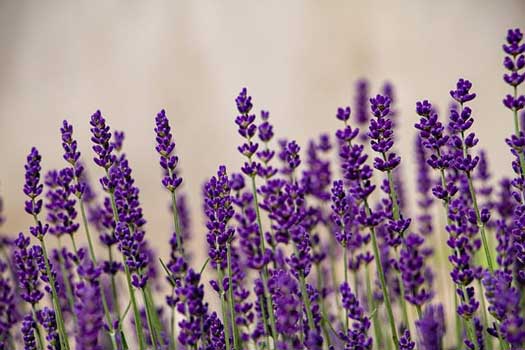
Oregano: A Flavorful Journey in the Garden
Oregano brings its bold flavor and culinary versatility to the garden, enhancing the taste of lettuce and adding depth to culinary creations. As companions, oregano and lettuce share not only flavor but also a symbiotic relationship that benefits both plants. While lettuce provides a nutritious backdrop, oregano attracts beneficial insects like predatory mites and provides natural pest control, ensuring a balanced ecosystem where plants thrive in harmony.
- Botanical Name: Origanum vulgare
- Light and Soil: Full sun; well-drained soil.
- Spacing: 8-12 inches between lettuce and oregano.
- Herbal Harmony: Plant oregano near lettuce but avoid heavy shading of lettuce.

Calendula: A Splash of Color and Healing
Calendula bursts forth in a riot of color, its vibrant blooms attracting pollinators and repelling pests like aphids. As a companion to lettuce, calendula provides natural pest control, ensuring a healthy and vibrant garden ecosystem. Through their partnership, calendula and lettuce create a dynamic tapestry of colors and flavors that nourish the body and uplift the spirit.
- Botanical Name: Calendula officinalis
- Light and Soil: Full sun to partial shade; well-drained soil.
- Spacing: 12-15 inches around lettuce.
- Healing Companions: Interplant calendula with lettuce or plant around the edges of lettuce beds.
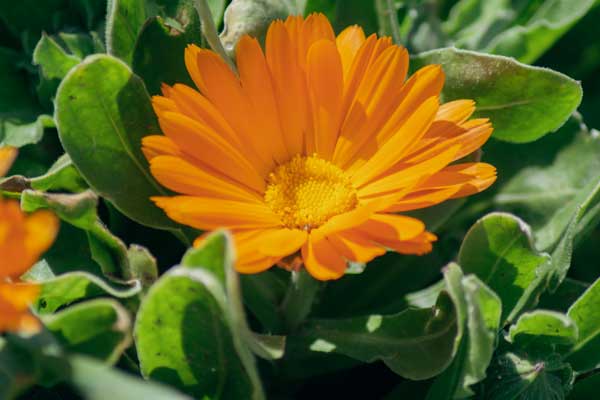
Parsnip: Anchoring Growth in the Garden
Parsnip stands tall as an anchor in the garden bed, its deep roots aerating the soil and providing stability for lettuce to thrive. As a companion to lettuce, parsnip enhances soil health and prevents erosion, ensuring a stable environment where plants flourish in abundance. Through their partnership, parsnip and lettuce exemplify the beauty and resilience of nature’s interconnected web.
- Botanical Name: Pastinaca sativa
- Light and Soil: Full sun; deep, well-drained soil.
- Spacing: 6-8 inches between lettuce and parsnips.
- Deep-Rooted Partners: Plant lettuce between parsnip rows, ensuring space for parsnip growth.
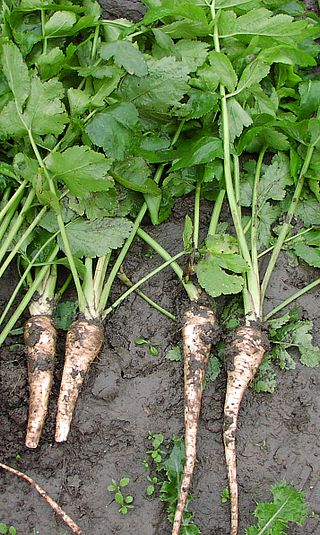
Celery: A Crisp Companion in the Garden
In the garden’s verdant landscape, celery emerges as a crisp and refreshing companion to lettuce, adding both visual appeal and practical benefits to the garden bed. As celery and lettuce companion plants share not only physical space but also a symbiotic relationship that promotes mutual growth and well-being. While lettuce offers a nutritious backdrop, celery contributes its unique qualities, such as similar water and nutrient requirements, creating a harmonious environment where both plants thrive in abundance.
- Botanical Name: Apium graveolens
- Light and Soil: Full sun to partial shade; rich, moist, well-drained soil.
- Spacing: 8-12 inches between lettuce and celery.
- Row Alternation: Plant celery in rows with lettuce or alternate rows of celery and lettuce.
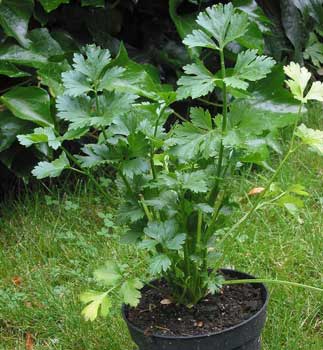
Beans: A Nutrient-Rich Partner in Growth
Beans stand tall as nutrient-rich partners in the garden, their vigorous growth and nitrogen-fixing abilities enhancing the soil and benefiting lettuce. As beans and lettuce companion plants share not only physical space but also a symbiotic relationship that fosters mutual support and resilience. While lettuce provides a verdant backdrop, beans enrich the soil with nitrogen, promoting healthy growth and abundant harvests. Together, they exemplify the beauty and synergy of companion planting, creating a thriving ecosystem where plants flourish in harmony.
- Botanical Name: Phaseolus vulgaris
- Light and Soil: Full sun; well-drained, fertile soil.
- Spacing: 6-8 inches between lettuce and beans.
- Trellis Teamwork: Grow beans on a trellis and plant lettuce at the base, ensuring beans don’t overshadow lettuce too much.
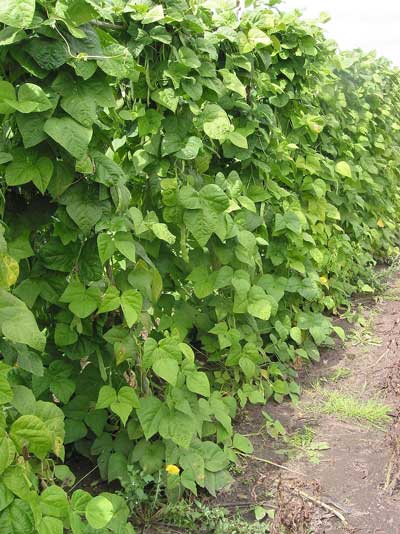
Bad Companion Plants for Lettuce:
Let’s look at some reasons why some plants may not be good companions for lettuce:
- Competing for Resources: Plants like broccoli, kale, spinach, parsley, cabbage, cauliflower, and arugula are all leafy greens or brassicas that have similar resource requirements to lettuce. When planted together, they may compete for nutrients, water, and space in the soil, leading to stunted growth or reduced yields.
- Allelopathy: Some plants, like onions and fennel, release chemicals into the soil that inhibit the growth of nearby plants. This phenomenon, known as allelopathy, can negatively impact the growth of lettuce and other neighboring crops.
- Disease Transmission: Plants within the same family, such as tomatoes and cucumbers (both members of the nightshade family), can be susceptible to similar diseases. When grown together, they may facilitate the spread of diseases that can affect lettuce.
- Competition for Sunlight: Tall or sprawling plants like tomatoes, cucumbers, and some herbs can shade smaller plants like lettuce, reducing their access to sunlight and hindering photosynthesis.
By understanding which plants are good or bad companions for lettuce, you can plan your gardens more effectively to promote healthier growth and higher yields.

Tips for Successful Lettuce Companion Planting
In the lush world of gardening, Lettuce Companion Planting emerges as a game-changer, elevating the health and vitality of your garden beds. With a few practical tips and guidelines, you can harness the power of companion plants to create a thriving ecosystem where lettuce flourishes alongside its beneficial allies.
Choose Companions Wisely
When embarking on your lettuce companion planting journey, choose companions that complement each other’s growth habits and provide mutual benefits. Consider incorporating edible flowers like marigolds or nasturtiums, which not only add beauty to the garden but also repel pests like aphids, serving as natural aphid repellents.
Mind Your Spacing
Pay close attention to spacing when planting lettuce and its companions. Ensure adequate distance between plants to prevent overcrowding and allow each plant to access sunlight, water, and nutrients efficiently. For example, when planting root vegetables such as carrots or turnips alongside lettuce, provide ample space for their roots to expand without competing with lettuce for resources.
Practice Crop Rotation
Rotate your crops regularly to prevent soil depletion and reduce the risk of pest and disease buildup. Incorporate root vegetables like radishes or parsnips into your crop rotation plan to break up soil compaction and add organic matter to the soil, promoting overall soil health and fertility.
Enhance Soil with Organic Matter
Boost soil fertility and structure by incorporating organic matter such as compost or aged manure into your garden beds. Organic matter enriches the soil with essential nutrients and beneficial microorganisms, creating a fertile environment where lettuce and its companion plants thrive.
Utilize Trap Crops
Strategically plant trap crops such as radishes or nasturtiums to lure pests away from lettuce and other valuable crops. Trap crops act as decoys, attracting pests like aphids or flea beetles, which can then be easily managed or removed from the garden, reducing the risk of damage to lettuce and its companions.
Cultivate Garden Companions
Encourage beneficial insects like lacewings or parasitic wasps to take up residence in your garden by providing habitat and food sources. Incorporate flowering plants like chamomile or lavender to attract beneficial insects that prey on aphids and other garden pests, effectively serving as natural aphid repellents.
Harness Fungicidal Properties
Select companion plants with fungicidal properties, such as calendula or chives, to help prevent fungal diseases like powdery mildew or damping-off. These plants not only add visual interest to the garden but also contribute to disease prevention, ensuring that lettuce and its companions remain healthy and vigorous throughout the growing season.
By following these practical tips and guidelines for lettuce companion planting, you can create a thriving garden ecosystem where lettuce and its companions coexist harmoniously, maximizing the benefits of companion planting while promoting overall garden health and vitality.

Frequently Asked Questions about Planting with Lettuce
Q: What to plant with lettuce?
A: Lettuce thrives when planted alongside certain companion plants like strawberries, beets, carrots, and herbs like basil and thyme. These companions can enhance growth and flavor while deterring pests.
Q: What grows well with lettuce?
A: Lettuce grows well with a variety of plants, including other leafy greens like spinach and kale, as well as root vegetables such as radishes and turnips. These plants share similar growing conditions and can complement each other in the garden.
Q: What not to plant with lettuce ?
A: Some plants may not be ideal companions for lettuce due to competition for resources or allelopathic effects. Examples include members of the brassica family like broccoli and cabbage, which may inhibit lettuce growth.
Q: What to grow with lettuce?
A: You can grow a variety of vegetables and herbs alongside lettuce, such as peas, beans, cucumbers, and chives. These plants can provide shade, support, or pest protection to lettuce while also offering a diverse harvest.
Q: What to plant with lettuce to keep bugs away?
A: Planting certain companion plants like marigolds, chives, and mint near lettuce can help repel pests and deter insect damage. Additionally, practicing good garden hygiene and avoiding overcrowding can reduce pest infestations.
Q: Are there specific romaine lettuce companion plants?
A: Romaine lettuce can benefit from companions like dill, cilantro, and chamomile, which can attract beneficial insects and improve soil health. These plants can enhance the growth and flavor of romaine lettuce.
Q: What herbs grow well with lettuce?
A: Herbs like basil, thyme, and oregano are excellent companions for lettuce. They not only add flavor to dishes but also repel pests and attract beneficial insects, creating a healthier garden ecosystem.
Q: Can I plant companion flowers for lettuce?
A: Yes, companion flowers like marigolds, nasturtiums, and calendula can provide beauty and pest control benefits in the lettuce garden. Their colorful blooms attract pollinators and repel pests, enhancing the overall garden environment.
Q: Can I grow lettuce and its companions in containers?
A: Yes, lettuce and its companion plants can be grown together in containers, provided they have enough space and proper drainage. Choose compact varieties and consider the mature size of each plant to ensure they can thrive in a confined space.
Q: What are good companion plants for lettuce in containers?
A: Herbs like basil and chives, compact vegetables like radishes, cherry and flowers like nasturtiums are excellent companions for lettuce in containers.
Q: Name some lettuce companion plants herbs ?
A: Several herbs make excellent companions for lettuce, enhancing its growth and flavor while deterring pests Like Basil, Chivesand Parsley
Q: Are Onions and Lettuce Companion Plants?
A: While onions and lettuce can be grown in close proximity, they are not typically considered ideal companion plants. Onions have specific soil and spacing requirements that may not align well with those of lettuce. Additionally, onions are known to release compounds that can inhibit the growth of certain plants, including lettuce. Therefore, it’s generally best to avoid planting onions and lettuce together if possible to prevent potential competition and allelopathic effects.
Conclusion Lettuce Companion Plants
In conclusion, exploring the world of lettuce companion plants opens up a realm of possibilities for creating thriving and harmonious garden ecosystems. By strategically selecting companions like herbs, leafy greens, root vegetables, and flowers, gardeners can maximize space, enhance soil health, and deter pests naturally. With careful planning and consideration of each plant’s unique attributes, the synergy between lettuce and its companions can yield bountiful harvests and vibrant garden landscapes.

